Physical Address
304 North Cardinal St.
Dorchester Center, MA 02124
Physical Address
304 North Cardinal St.
Dorchester Center, MA 02124
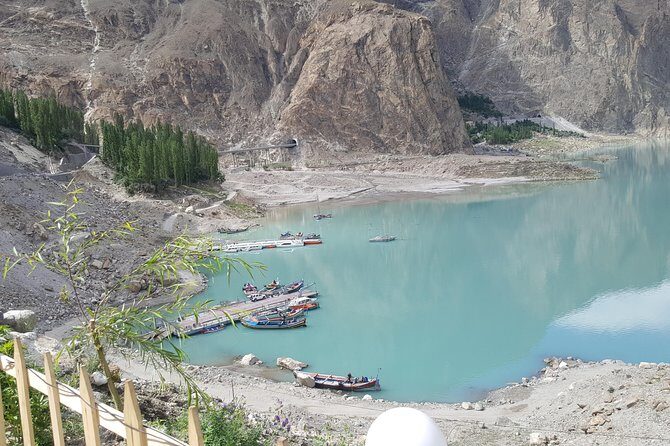
Experience Pakistan’s stunning Hunza Valley on this 7-day Cherry Blossom Tour, featuring ancient forts, breathtaking mountain views, and authentic local culture.
If you’re dreaming of tackling some of the world’s most awe-inspiring mountain scenery, then the Cherry Blossom Tour in Hunza Valley might just tick all your boxes. This carefully curated 7-day private adventure takes you through the highs of Pakistan’s northernmost regions, with the added seasonal magic of cherry blossoms in spring. From ancient forts to towering peaks like Rakaposhi and Spantik, the journey offers a blend of natural beauty, cultural insights, and unforgettable vistas.
What we love most about this experience is the balance it strikes between guided exploration and time to soak in the scenery at your own pace. The inclusion of expert guides, who enrich the journey with their knowledge of local history and geography, makes it stand out. The scenery—mountains, rivers, and lush villages—remains spectacular no matter the season, so even if you visit outside the cherry blossom months, you’ll still enjoy the region’s majesty.
On the flip side, one thing to consider is the long driving hours involved, especially on the second and sixth days, which might be tiring for some travelers. However, the comfort of private transport and the chance to witness some of Pakistan’s most iconic landscapes often outweigh this for adventure lovers. This tour suits travelers seeking an immersive cultural experience paired with stunning natural beauty, especially those willing to spend some time on the road to get to these remote, breathtaking sites.
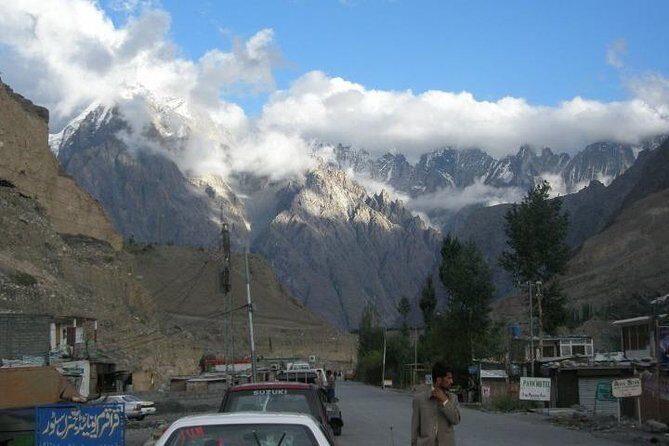
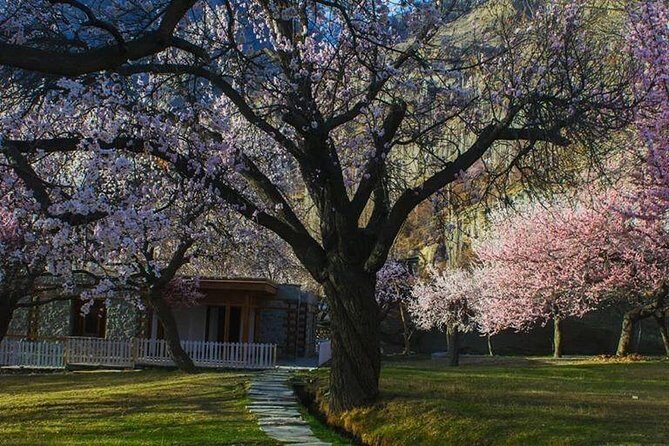
The adventure kicks off with a pickup from Islamabad, either from your hotel or the airport, at 9 am. The first day involves a roughly five-hour drive through the scenic Abbottabad and Manshera regions, with a highlight being the newly built Hazara Express motorway. This route offers a smooth start, avoiding some of the older, more winding roads, and sets a comfortable tone for the days ahead.
Your journey on the famed Karakoram Highway then takes you to Besham, which is approximately a ten-hour drive with a lunch stop and plenty of opportunities to admire the landscape. The highway itself is an attraction—stretching 1,300 kilometers from Pakistan into China, it’s an engineering marvel in itself. Along the way, you’ll get glimpses of iconic peaks—Nanga Parbat will be a prominent sight, especially at the Nanga Parbat viewpoint near Chilas, where you can snap photos of this towering giant.
Looking for more options in Islamabad? Here are some other experiences worth considering.

The second day is a long haul, estimated at about ten hours, but it’s packed with memorable stops. Right after crossing Raikot Bridge, travelers often pause at the Nanga Parbat viewpoint, where the sheer scale of the mountain is humbling. Many reviews mention this as a highlight—”Our guide was incredibly knowledgeable about the mountain’s geology and stories,” one reviewer shared.
Next, you’ll enter Jaglot, a geographic marvel where the Himalayas, Karakoram, and Hindu Kush converge. This is where three major mountain ranges meet, and three of the world’s highest peaks—Nanga Parbat, K-2, and Trich Mir—are visible in the distance. The rivers flowing down from Skardu and Gilgit join here, creating a natural knot that’s dramatic and humbling to witness. Travelers find this spot particularly special for its natural grandeur and sense of being at the crossroads of some of the world’s most formidable mountains.
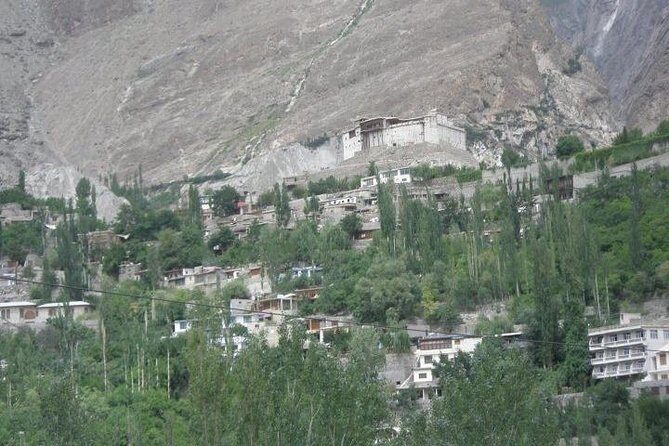
Day three introduces you to some of the region’s picturesque highlights. The Danyore Hanging Bridge is a relic of old-world engineering—one of the region’s oldest suspension bridges, offering a glimpse into how locals crossed rivers for centuries. It’s a brief stop but one that captures the essence of life here.
Next, you’ll visit the Rakaposhi Viewpoint, perched an hour from Hunza. The snow-capped Rakaposhi peak, towering over 27,000 feet, seems to pierce the clouds. Many travelers note this as one of their favorite moments—”Watching Rakaposhi glow in the sunlight was surreal,” one reviewer said. The stream originating from the glacier adds a refreshing element, perfect for a quick picnic or a cup of tea.
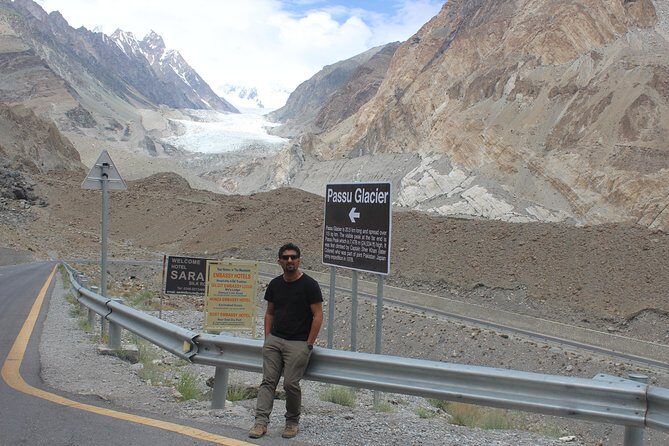
This day is steeped in history and culture. The Baltit Fort, over 800 years old and a UNESCO-listed site, offers a commanding view of the valley. Travelers are often struck by its architecture and the stories of the Balti and Hunza rulers. The included admission makes exploring this ancient site accessible, and guides often share fascinating tales about its strategic importance.
Adjacent is Altit Fort, even older at around 1100 years. It’s one of the most ancient surviving structures in Gilgit-Baltistan, and wandering through its thick stone walls, surrounded by gardens and orchards, provides a tangible connection to the area’s royal past. Visitors often comment on the peaceful gardens and the cool, shaded courtyards, perfect breaks from the mountain sun.
In the late afternoon, a visit to Eagles Nest on Duikar View Point offers panoramic views of the snow-capped peaks at sunrise or sunset. The jeep ride up is a fun adventure, and the view is well worth the early morning wake-up call—”The sunrise from Eagles Nest was breathtaking,” a guest reflected.
Finally, a stroll through Karimabad’s bazaar introduces you to local crafts, dry fruits, and the iconic Hunza cap. Many reviewers mention the delicious walnut cake at Hunza Cafe as a highlight.
A day dedicated to natural marvels begins with a visit to Attabad Lake, a stunning, vibrant turquoise lake formed after a 2010 landslide dammed the river. The contrast of the lake with the surrounding peaks during cherry blossom season makes for spectacular photos.
Next, the Passu Glacier and Passu Peak provide jaw-dropping scenery. The glacier’s blue ice and towering peaks create a postcard-perfect landscape, and many travelers comment on the sensation of standing at the edge of such ancient ice formations—”It’s like being on the surface of another planet,” one said.
Then, a quick stop at Sost village, the last stop inside Pakistan before the Chinese border, offers a chance to buy souvenirs and local snacks. Although the Khunjerab Pass itself is usually accessible from April, you’ll still enjoy the region’s rugged beauty.
Finally, explore the Sacred Rocks of Ganish, carved with inscriptions dating back to the 1st Millennium AD. The carvings reveal the region’s long history of cultural exchange and craftsmanship, which many visitors find truly fascinating.
The return journey to Besham is long—about ten hours—but the experience of traveling through the same breathtaking landscape in reverse is rewarding. The NLI Bazaar near Gilgit and other local markets offer souvenirs like dried fruits and handmade crafts, perfect for memories and gifts. It’s a good opportunity for last-minute shopping before heading back to Islamabad.
The final leg takes around five hours, depending on traffic and road conditions. Your driver will drop you at your hotel or the airport, ending your adventure with plenty of memories—and perhaps a new appreciation for Pakistan’s incredible natural and cultural richness.
This trip is ideal for travelers who want an immersive experience of Pakistan’s northern beauty, from centuries-old forts to towering peaks. The guided nature of the tour, with expert guides sharing insights, makes it accessible for those who may not speak the local language or are unfamiliar with the region. The long drives are part of the experience, providing scenic vistas and cultural snapshots along the way.
If you’re a nature lover, history enthusiast, or someone simply seeking breathtaking views away from crowded tourist spots, this tour offers solid value. The combination of beautiful scenery, cultural heritage, and knowledgeable guides makes it a memorable introduction to the Hunza Valley.
Is pickup offered for this tour?
Yes, the tour includes pickup from your Islamabad hotel or airport, making the start smooth and hassle-free.
How many days does the tour last?
The tour spans approximately 7 days, covering remote mountain villages, historical forts, and natural sights.
Are meals included?
Some meals are included, but many are left to your choice, so you can explore local cuisine or opt for the included options.
What is the price per person?
The tour costs around $422.66 per person, which covers transportation, guides, and entrance fees to major sites.
Is transportation comfortable?
The tour utilizes private transport, and the long drives are in modern vehicles, making the journey as comfortable as possible.
Can I customize the itinerary?
Since it’s a private tour, there’s room for some flexibility, especially with meal preferences and maybe even extra stops if arranged in advance.
Who guides the tour?
The tours are led by knowledgeable local guides, well-versed in the region’s geography, history, and culture, ensuring you gain context along the way.
Are there opportunities for shopping?
Yes, the tour includes stops at local markets, where you can buy dry fruits, souvenirs, and handmade crafts.
Is this tour suitable outside cherry blossom season?
Absolutely. While cherry blossoms add a special touch in spring, the scenery and cultural sites are impressive year-round.
Overall, the Cherry Blossom Tour in Hunza Valley offers a beautiful blend of natural wonder, cultural heritage, and expert guidance. Its value lies in the carefully paced itinerary and the chance to witness Pakistan’s northern landscapes in one of their most picturesque seasons. Whether you’re an adventure seeker or simply craving a peaceful retreat amid towering mountains, this tour has something to offer.